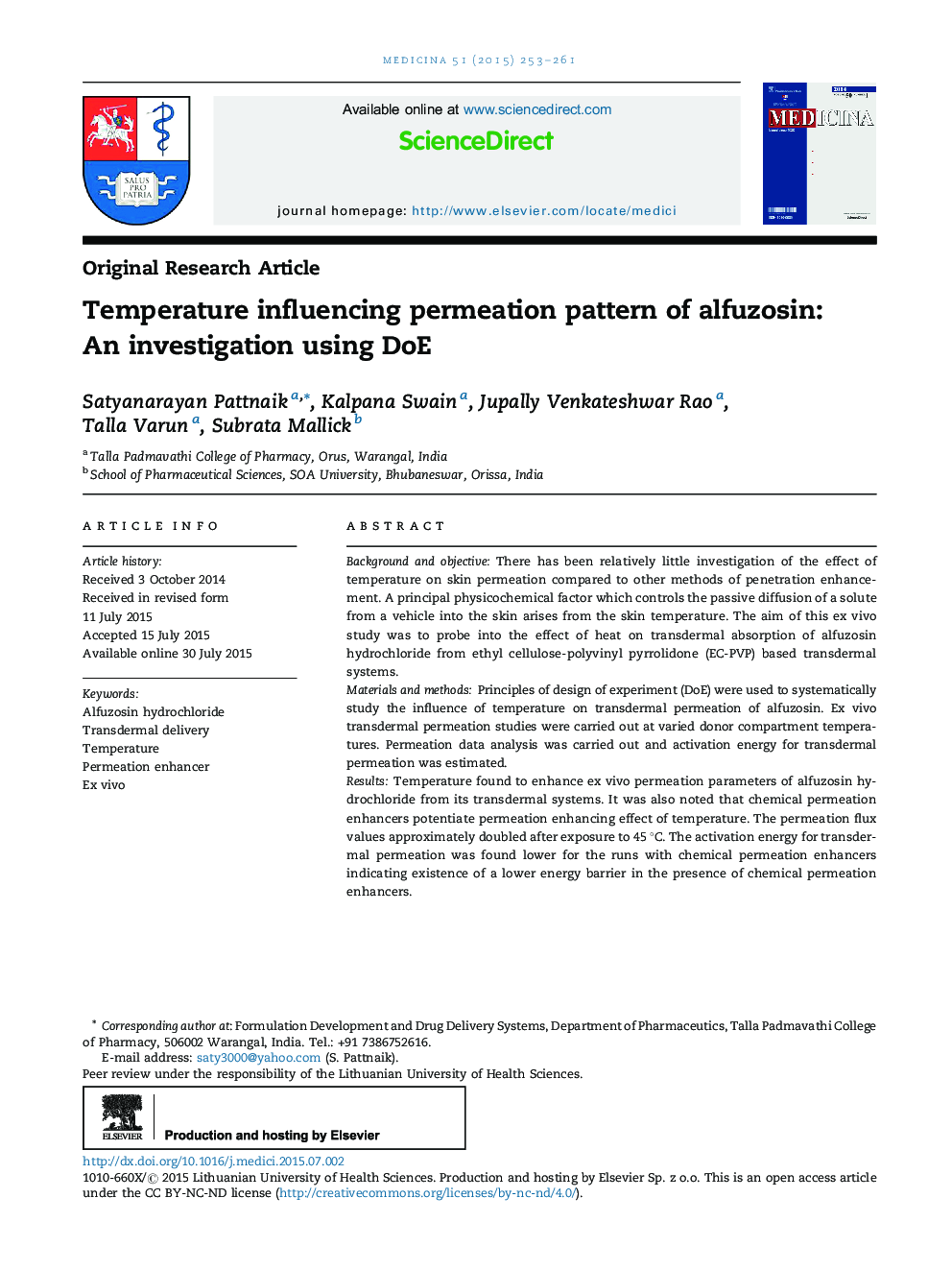| کد مقاله | کد نشریه | سال انتشار | مقاله انگلیسی | نسخه تمام متن |
|---|---|---|---|---|
| 2680409 | 1142349 | 2015 | 9 صفحه PDF | دانلود رایگان |
Background and objectiveThere has been relatively little investigation of the effect of temperature on skin permeation compared to other methods of penetration enhancement. A principal physicochemical factor which controls the passive diffusion of a solute from a vehicle into the skin arises from the skin temperature. The aim of this ex vivo study was to probe into the effect of heat on transdermal absorption of alfuzosin hydrochloride from ethyl cellulose-polyvinyl pyrrolidone (EC-PVP) based transdermal systems.Materials and methodsPrinciples of design of experiment (DoE) were used to systematically study the influence of temperature on transdermal permeation of alfuzosin. Ex vivo transdermal permeation studies were carried out at varied donor compartment temperatures. Permeation data analysis was carried out and activation energy for transdermal permeation was estimated.ResultsTemperature found to enhance ex vivo permeation parameters of alfuzosin hydrochloride from its transdermal systems. It was also noted that chemical permeation enhancers potentiate permeation enhancing effect of temperature. The permeation flux values approximately doubled after exposure to 45 °C. The activation energy for transdermal permeation was found lower for the runs with chemical permeation enhancers indicating existence of a lower energy barrier in the presence of chemical permeation enhancers.ConclusionThe method reported here is a simple and useful tool for studying the effect of heat on percutaneous absorption. Such temperature dependent enhancement of flux can be more pronounced at skin surface temperatures >45 °C.
Journal: Medicina - Volume 51, Issue 4, 2015, Pages 253–261
